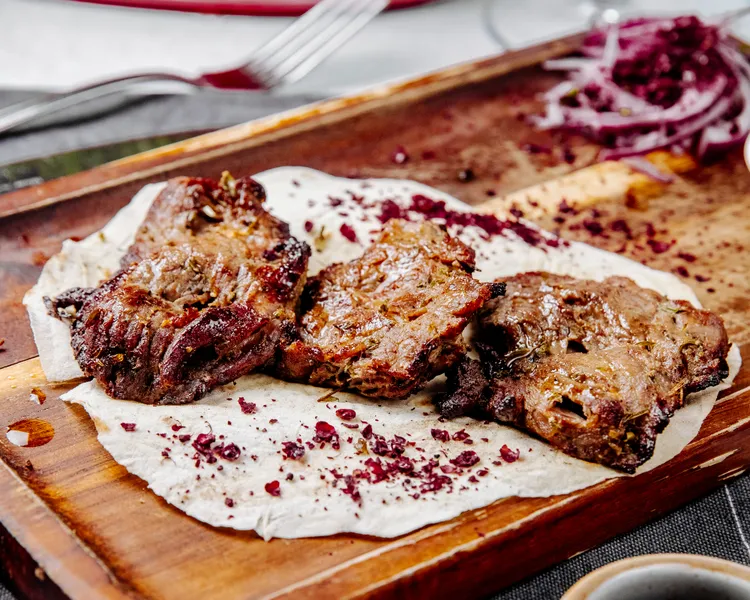The Joyful Experience of Eating Watermelon: A Celebration of Summer’s Sweetest Fruit
When you eat watermelon, you’re not just biting into a fruit - you’re diving into a sensory adventure that captures the essence of summer. From its vibrant colors to its juicy, refreshing taste, watermelon is more than a snack; it’s a cultural icon, a nutritional powerhouse, and a symbol of carefree moments under the sun. So, grab a slice, and let’s dive into the world of watermelon!

The Sensory Delight of Watermelon
Biting into a watermelon is an experience that engages all your senses. Picture this: you’re at a summer picnic, the sun is shining, and a wedge of watermelon sits before you, its deep green rind striped with lighter hues, encasing a vibrant red or yellowish flesh speckled with black seeds. The moment your teeth sink into that crisp, juicy flesh, there’s a satisfying crunch followed by an explosion of sweet, refreshing juice. The texture is unique - firm yet tender, with a burst of hydration that feels like nature’s answer to a hot day.
The flavor of watermelon is a delicate balance of sweetness with a hint of mild tartness, depending on the variety. Its aroma is subtle yet inviting, evoking memories of backyard barbecues or lazy days by the pool. Visually, watermelon is a feast for the eyes, with its contrasting colors making it a standout on any table. And let’s not forget the tactile joy of holding a cool, heavy slice, the juice dripping down your chin as you savor every bite. Eating watermelon is messy, unpretentious, and utterly delightful.
A Brief History of Watermelon
Watermelon’s journey to our plates is a fascinating tale that spans thousands of years and multiple continents. Originating in Africa, likely in the Kalahari Desert region, watermelons (Citrullus lanatus) were first cultivated over 4,000 years ago in ancient Egypt. Archaeological evidence, including seeds and paintings in Egyptian tombs, suggests that watermelons were prized as a source of hydration in arid climates. These early watermelons were smaller and less sweet than today’s varieties, often with bitter flesh, but they were valued for their ability to store water during long journeys.
From Africa, watermelons spread across the Mediterranean and into Asia, where selective breeding over centuries enhanced their sweetness and size. By the 10th century, they were being cultivated in China, which remains one of the world’s top watermelon producers today. Watermelons made their way to the Americas via European explorers and the slave trade, becoming a staple in Southern U.S. cuisine by the 19th century. Today, watermelons are grown globally, with over 1,200 varieties ranging in size, shape, and flavor.
The Nutritional Powerhouse
When you eat watermelon, you’re not just indulging in a tasty treat - you’re nourishing your body. Watermelon is often called “nature’s candy,” but it’s a guilt-free pleasure packed with health benefits. Here’s a breakdown of why watermelon is a nutritional superstar:
- Hydration Hero: Watermelon is about 92% water, making it one of the most hydrating foods you can eat. A single serving can help replenish fluids, making it ideal for hot days or post-workout recovery.
- Rich in Nutrients: Watermelon is low in calories (about 46 calories per cup) but high in essential nutrients. It’s an excellent source of vitamins A and C, which support immune health and skin vitality. It also contains potassium, magnesium, and small amounts of B vitamins.
- Antioxidant Power: Watermelon is loaded with antioxidants like lycopene, which gives red-fleshed varieties their vibrant color. Lycopene is linked to heart health, reduced inflammation, and a lower risk of certain cancers. In fact, watermelon contains more lycopene per serving than tomatoes!
- Heart Health: The amino acid citrulline in watermelon may help improve blood flow and lower blood pressure by relaxing blood vessels. This makes watermelon a heart-friendly snack.
- Muscle Recovery: Citrulline also aids in reducing muscle soreness, making watermelon a favorite among athletes. Pair it with a protein source for a perfect recovery snack.
- Low in Sugar, High in Satisfaction: Despite its sweetness, watermelon has a low glycemic load, meaning it won’t spike your blood sugar when eaten in moderation. Its high water and fiber content also promote feelings of fullness.
The Cultural Significance of Watermelon
Watermelon transcends its role as a fruit to become a cultural touchstone in many parts of the world. Its association with summer, abundance, and community makes it a staple at gatherings, from Fourth of July barbecues in the U.S. to festivals in Asia.
- In the United States: Watermelon is synonymous with summer celebrations. It’s a fixture at picnics, where seed-spitting contests add a playful element to gatherings. In the South, watermelon has deep roots in African American culture, though it has unfortunately been subject to negative stereotypes in the past. Today, many communities are reclaiming watermelon as a symbol of resilience and joy, celebrating its deliciousness without stigma.
- In Asia: In countries like China and Japan, watermelon is a luxury fruit, often given as a gift. Japan’s square watermelons, grown in molds for decorative purposes, are a testament to the fruit’s cultural cachet. In Vietnam, watermelon seeds are roasted and eaten during Lunar New Year as a symbol of prosperity.
- In Africa: As the fruit’s ancestral home, watermelon holds a special place in African cuisines. In some regions, the seeds are ground into flour or used in soups, showcasing the fruit’s versatility.
- Global Festivals: Watermelon festivals, like the one in Carytown, Virginia, or the Chinchilla Melon Festival in Australia, celebrate the fruit with games, contests, and creative dishes, highlighting its universal appeal.
Culinary Versatility: Beyond the Slice
While eating watermelon straight from the rind is a classic experience, its versatility in the kitchen is boundless. Here are some creative ways to enjoy watermelon:
- Salads: Watermelon pairs beautifully with savory ingredients. A popular summer salad combines watermelon cubes with feta cheese, mint, and a drizzle of balsamic glaze for a refreshing balance of sweet and salty.
- Smoothies and Juices: Blend watermelon with lime, mint, or berries for a hydrating smoothie. Watermelon juice is a refreshing base for cocktails or mocktails, like a watermelon mojito.
- Grilled Watermelon: Grilling watermelon slices caramelizes their sugars, adding a smoky depth. Serve with a sprinkle of sea salt or a dollop of yogurt for a unique appetizer.
- Salsas and Gazpachos: Dice watermelon with cucumber, red onion, and jalapeño for a vibrant salsa, or blend it into a chilled gazpacho for a cooling summer soup.
- Desserts: Watermelon sorbet, popsicles, or even watermelon-infused cakes bring a playful twist to sweet treats.
- Pickled Rind: Don’t toss the rind! In Southern cuisine, watermelon rind is pickled with vinegar and spices, creating a tangy condiment.
- Seeds: Roasted watermelon seeds are a nutritious snack, packed with protein and healthy fats. Simply rinse, dry, and roast with a sprinkle of salt.
Fun Facts and Trivia About Watermelon
- World’s Heaviest Watermelon: The Guinness World Record for the heaviest watermelon is held by a 350.5-pound (159 kg) giant grown in Tennessee in 2013.
- Seedless Varieties: Seedless watermelons, introduced in the 20th century, are hybrids created through crossbreeding. They still have small, edible white seeds.
- Not Just Red: Watermelon flesh can be red, pink, yellow, or white, depending on the variety. Yellow-fleshed varieties, like “Yellow Crimson,” are gaining popularity for their unique flavor.
- A Fruit and a Vegetable: Botanically, watermelon is both a fruit (due to its sweet, seed-filled flesh) and a vegetable (as part of the gourd family, related to cucumbers and pumpkins).
- Watermelon as a Status Symbol: In Japan, premium watermelons, like the Densuke variety, can sell for hundreds of dollars due to their rarity and perfect appearance.
How to Pick the Perfect Watermelon
Choosing a ripe, juicy watermelon can feel like a gamble, but these tips will help you select a winner every time:
- Look for the Yellow Spot: A ripe watermelon has a creamy yellow or orange “field spot” where it rested on the ground. A white or pale spot indicates it’s underripe.
- Check the Weight: A good watermelon feels heavy for its size, indicating it’s full of juice.
- Tap Test: Give the watermelon a gentle tap. A ripe one produces a deep, hollow sound, while an unripe one sounds dull.
- Inspect the Rind: The rind should be firm, with well-defined stripes. Avoid watermelons with soft spots or blemishes.
- Symmetry Matters: A uniformly shaped watermelon is more likely to have ripened evenly.
The Social Joy of Watermelon
Eating watermelon is often a communal experience, bringing people together in moments of shared joy. Whether it’s a family barbecue, a beach day, or a neighborhood potluck, watermelon has a way of sparking laughter and connection. Kids love its sweetness, adults appreciate its refreshing quality, and everyone enjoys the playful messiness of it all. Seed-spitting contests, watermelon-carving competitions, or simply passing slices around a campfire create memories that linger long after the last bite.
In many cultures, sharing food is an act of love and hospitality, and watermelon’s affordability and abundance make it a perfect candidate for feeding a crowd. Its presence at gatherings symbolizes generosity and the simple pleasures of life.
The Magic of Watermelon
When you eat watermelon, you’re partaking in a tradition that spans centuries and continents. It’s a fruit that nourishes the body, delights the senses, and brings people together. Whether you’re savoring a simple slice, experimenting with a gourmet recipe, or sharing it with loved ones, watermelon embodies the joy of living in the moment. Its vibrant colors, refreshing taste, and cultural significance make it a true gift of nature.
So, the next time you bite into a juicy wedge of watermelon, take a moment to appreciate its journey - from ancient African deserts to your summer table. Celebrate its versatility, its health benefits, and its ability to make any day feel like a holiday. And if you’re feeling inspired, try a new watermelon recipe, share a slice with a friend, or even plant a few seeds to grow your own. After all, watermelon isn’t just food - it’s a slice of happiness.









